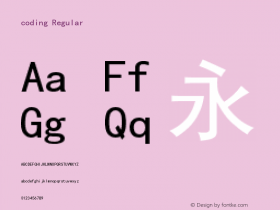

Source: http://www.flickr.com.Uploaded to Flickr by Stephen Coles and tagged with "ffkievit". License: CC BY-ND.
[ ENLARGE ] Updated July 7, 2008. The OpenType format offers typographers more glyphs, and (sometimes) more confusion. As the FontFont library is converted to OpenType, premium fonts are continually released with advanced typographic features and language support built-in. With so many new releases we don't expect you to keep up on which FontFonts can speak which languages. Just keep an eye on this post for the latest updates. Learn more about OpenType in the FontFont OpenType User Guide (700KB PDF). More information, along with a list of FontFonts in OpenType format, can be found in this lovely leaflet (506KB PDF), including the lowdown on Std ("OT") vs. Pro:OpenType ProFontFonts support a broader range of languages thanOpenType StandardFontFonts. Supported language encodings include Central European, Greek, and Cyrillic.OpenType MinFontFonts support the same languages as OpenType Standard FontFonts, though some non-essential glyphs (such as mathematical operators and mathematical Greek characters) may have been omitted.







